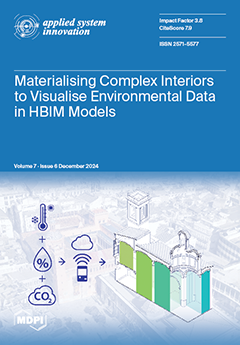Open AccessArticle
Case Study of an Integrated Design and Technical Concept for a Scalable Hyperloop System
by
Domenik Radeck, Florian Janke, Federico Gatta, João Nicolau, Gabriele Semino, Tim Hofmann, Nils König, Oliver Kleikemper, Felix He-Mao Hsu, Sebastian Rink, Felix Achenbach and Agnes Jocher
Viewed by 1603
Abstract
This paper presents the design process and resulting technical concept for an integrated hyperloop system, aimed at realizing efficient high-speed ground transportation. This study integrates various functions into a coherent and technically feasible solution, with key design decisions that optimize performance and cost-efficiency.
[...] Read more.
This paper presents the design process and resulting technical concept for an integrated hyperloop system, aimed at realizing efficient high-speed ground transportation. This study integrates various functions into a coherent and technically feasible solution, with key design decisions that optimize performance and cost-efficiency. An iterative design process with domain-specific experts, regular reviews, and a dataset with a single source of truth were employed to ensure continuous and collective progress. The proposed hyperloop system features a maximum speed of 600
and a capacity of 21 passengers per pod (vehicle). It employs air docks for efficient boarding, electromagnetic suspension (EMS) combined with electrodynamic suspension (EDS) for high-speed lane switching, and short stator motor technology for propulsion. Cooling is managed through water evaporation at an operating pressure of 10
, while a 300
inductive power supply (IPS) provides onboard power. The design includes a safety system that avoids emergency exits along the track and utilizes separated safety-critical and high-bandwidth communication. With prefabricated concrete parts used for the tube, construction costs can be reduced and scalability improved. A dimensioned cross-sectional drawing, as well as a preliminary pod mass budget and station layout, are provided, highlighting critical technical systems and their interactions. Calculations of energy consumption per passenger kilometer, accounting for all functions, demonstrate a distinct advantage over existing modes of transportation, achieving greater efficiency even at high speeds and with smaller vehicle sizes. This work demonstrates the potential of a well-integrated hyperloop system to significantly enhance transportation efficiency and sustainability, positioning it as a promising extension to existing modes of travel. The findings offer a solid framework for future hyperloop development, encouraging further research, standardization efforts, and public dissemination for continued advancements.
Full article
►▼
Show Figures





